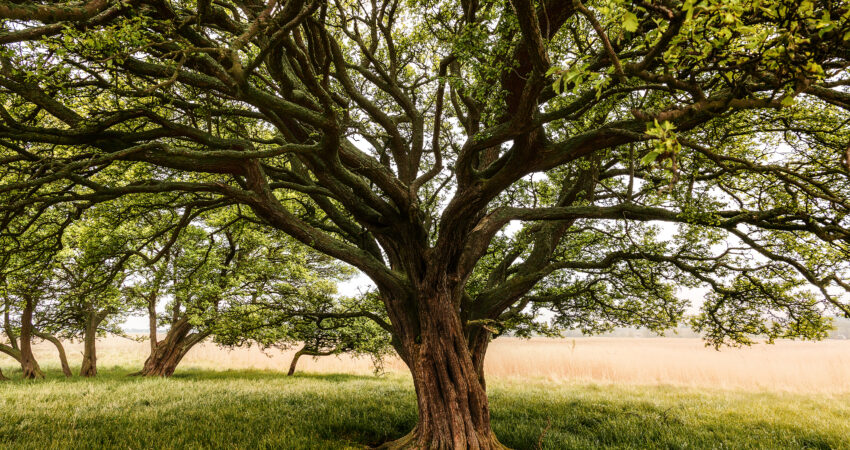Water scarcity is a pressing global challenge exacerbated by climate change, population growth, and unsustainable water management practices. In the face of this crisis, the importance of water conservation cannot be overstated. While technological solutions and policy interventions play crucial roles, the power of nature in water conservation often goes unrecognized. Indigenous trees, deeply intertwined with local ecosystems, possess remarkable abilities to regulate water cycles, prevent soil erosion, and replenish aquifers. This blog post explores the profound connection between indigenous trees and water conservation, shedding light on their invaluable contributions and advocating for their preservation and restoration.
Understanding Indigenous Trees: Indigenous trees, also known as native or endemic species, are those naturally occurring in specific regions or ecosystems, having evolved over time to thrive in local environmental conditions. These trees play a pivotal role in maintaining ecological balance, supporting biodiversity, and providing ecosystem services critical for human well-being. Unlike exotic species, indigenous trees are uniquely adapted to local climates, soils, and water regimes, making them resilient and efficient stewards of natural resources.
The Link Between Indigenous Trees and Water Conservation: The relationship between indigenous trees and water conservation is multifaceted, with several mechanisms at play:
-
Watershed Protection: Indigenous trees play a crucial role in watershed management by stabilizing soil, reducing erosion, and preventing sediment runoff into rivers and streams. Their extensive root systems help bind soil particles together, preventing erosion caused by rainfall and runoff, thus safeguarding water quality and quantity.
-
Groundwater Recharge: The roots of indigenous trees facilitate the infiltration of rainwater into the soil, replenishing groundwater aquifers and maintaining baseflow in rivers and streams. Through a process known as phytoremediation, trees also help purify groundwater by filtering out pollutants and excess nutrients.
-
Transpiration and Evapotranspiration: Trees regulate the water cycle through transpiration, the process by which water is drawn up from the soil and released into the atmosphere through leaf pores. This moisture then condenses to form clouds and eventually falls back to the earth as precipitation. Indigenous trees, with their dense foliage and high transpiration rates, contribute significantly to regional rainfall patterns and microclimate regulation.
-
Soil Moisture Regulation: The canopy of indigenous trees provides shade and reduces soil surface temperature, thereby minimizing evaporation and conserving soil moisture. This creates a more favorable environment for plant growth and reduces water stress during periods of drought.
Case Studies and Success Stories: Numerous case studies around the world underscore the vital role of indigenous trees in water conservation and watershed management:
-
The reforestation efforts in the Brazilian Amazon, led by indigenous communities and conservation organizations, aim to restore degraded landscapes and protect vital water resources in the world’s largest rainforest.
-
The Green Belt Movement in Kenya, founded by Nobel laureate Wangari Maathai, has planted millions of indigenous trees to combat deforestation, soil erosion, and water scarcity while empowering local communities.
-
Agroforestry practices in India, such as the planting of native species like neem and banyan trees alongside crops, have been shown to improve soil fertility, enhance water retention, and increase agricultural productivity.
-
Riparian restoration projects in the United States, focusing on the replanting of native trees along riverbanks and wetlands, have proven effective in reducing erosion, filtering pollutants, and improving water quality for downstream communities.
The Way Forward: To harness the full potential of indigenous trees for water conservation, concerted efforts are needed at individual, community, and policy levels:
-
Promoting Native Tree Planting: Encourage the widespread adoption of indigenous tree species in reforestation, afforestation, and agroforestry initiatives, prioritizing species with high water-use efficiency and ecological value.
-
Land Use Planning and Management: Integrate indigenous tree conservation and restoration into land use planning processes, watershed management plans, and environmental impact assessments to safeguard water resources and biodiversity.
-
Community Engagement and Capacity Building: Empower local communities, indigenous peoples, and smallholder farmers to participate in tree planting and conservation efforts, providing training, technical assistance, and incentives for sustainable land management practices.
-
Policy Support and Funding: Advocate for policies that incentivize native tree planting, protect natural forests, and allocate funding for watershed restoration, afforestation programs, and sustainable land management initiatives.
Indigenous trees serve as nature’s reservoirs, capturing, storing, and replenishing precious water resources essential for life. By embracing and restoring native tree species, we can safeguard watersheds, mitigate the impacts of climate change, and build resilient communities for generations to come. Let us recognize the invaluable contributions of indigenous trees to water conservation and commit to preserving and restoring these natural treasures for the benefit of all.



